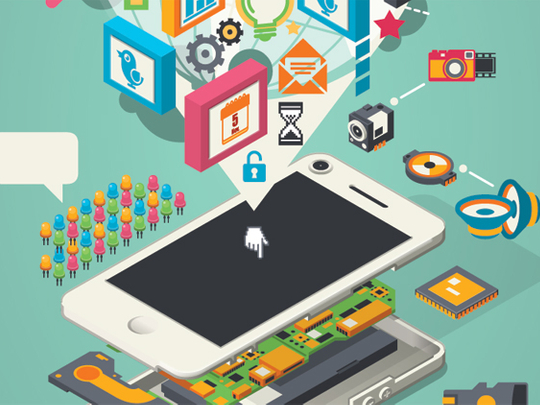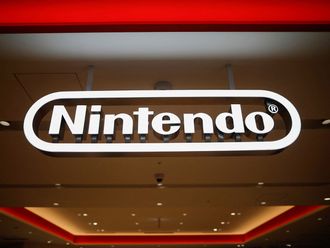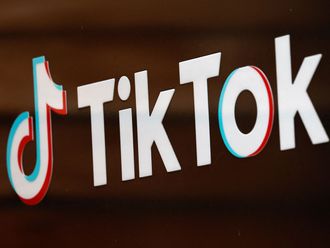
It is raining phones. Gartner estimates 1.81 billion mobile phones will be sold worldwide this year. In the third quarter, 455.6 million phones were sold, and 250.2 million of these, around 55 per cent, were smartphones. This is their highest share to date, with the bulk coming from Asia Pacific, which recorded a 77.3 per cent growth in smartphone sales. And this number will only grow as smartphones spiral downwards in pricing, pushing feature phones out of the market.
A clear winner of the smartphone race is Google’s Android, which leads in market share but not in revenue. It powers almost 82 per cent of smartphones sold in the third quarter and there is nothing to indicate its dominance has peaked. While this is great news for Google, it is not a success story for most phone manufacturers using it, except for Samsung, which bagged 32.1 per cent of the smartphones market, and blitzed the competition with its marketing and range of models.
Fighting standardisation
With a similar operating system (OS) on so many phones, it has become difficult to stand out in an overcrowded market — product differentiation is not just a challenge, but a nightmare. Hardware too has standardised, take apart smartphones and you will see chips, displays and processors from the same few manufacturers powering most devices.
The challenge of differentiation extends beyond Android. Most smartphone users do not care what their new phone runs on, as long as it delivers the usual set of promises: social networking, browsing, games, email, videos and music. What lies underneath the layer of apps is largely immaterial.
Juniper Research, in its Smartphone Futures study, has forecast slower growth for the ultra-premium and premium smartphone sectors. Fortunes in this segment will depend largely on “clear differentiation within a crowded market”.
The only exception seems to be Apple. When it introduces a new feature, it automatically becomes the gold standard against which the competition is benchmarked. It does not matter that others have tried out similar ideas before, such as voice commands or fingerprint scanners on phones.
Colour us impressed
The first thing you notice about a phone is its colour and shape. And this is where most vendors differentiate. A brand with bold colour choices is Nokia. Its Lumia phones in bright reds and banana yellows can be spotted a mile away.
Motorola has made colour customisation a key feature of the Moto X phones. Using the online Moto Maker tool, buyers can choose from 18 back-panel colours, seven accents and two front panels. This tool is currently available only in the US.
If you liked the gold iPhone and were wishing there was an Android equivalent, Samsung now has a gold Galaxy S4.
Sizing phones up
The main element on touchscreen phones is the screen itself. Which means most smartphones end up looking very similar. Size becomes a clear way of differentiation. And with the rise of phablets, the conversation has shifted from thinness to bigness. The current leader is Sony’s Xperia Z Ultra with its 6.4-inch screen. Nokia has joined the fray with its 6-inch Lumia 1520 encased in its signature bright shells.
Fit and finish
Samsung is known for its plastic phones and flimsy back panels. But a few companies go out of their way to construct phones with metal and premium materials. Apple is renowned for build quality, and Nokia has earned a fan following for its high-quality polycarbonate shells. On the Android side of things, HTC has taken the lead with the HTC One and its zero-gap all-aluminum body.
Shape of things to come
The latest experiments from Samsung and LG suggest flexible displays are the future. In the meantime, you can choose from two uniquely shaped phones: the banana-shaped LG G Flex, which promises to curve around your cheeks; and the Samsung Galaxy Round, which curves along the Y-axis and should be easier to carry in your pant pockets. Whether such phones will tempt you to ditch brick-shaped phones remains to be seen.
Say cheese
Would you buy a phone because it has a camera better than some DSLRs? Nokia hopes you will with its Lumia 1020, which has a 41-megapixel sensor. Similarly, Sony claims its flagship Xperia Z1 has been built with the same components as its compact digital cameras. Samsung has gone a step further and integrated a camera with 10x optical zoom lens into the Galaxy Zoom.
Transforming act
Motorola was in the spotlight in 2011, when it demonstrated an accessory that had a 10.1-inch screen, a keyboard and trackpad, battery, USB ports and speakers. Called the Lapdock, it was almost a laptop. The brains came from certain Motorola phones, when they were docked into the accessory. In theory, you could turn your phone into a laptop, but in practice, the software was clunky and the Lapdock too expensive.
Asus has its Padfone variants, where you get a 10-inch dumb display with a docking slot at the back — plug in a phone and it transforms into a full-featured tablet. The Alcatel One Touch Hero comes with a phone case that has an embedded e-Ink display, transforming the phone into a dedicated eBook reader.
Into the water
Sony has tried to be different by making its top-end Xperia phones water friendly. You can not only take these to the beach, but also for a dip for some underwater photography. Apparently, outside of Japan, these are the only waterproof phones you can buy. They have IP55/8 ratings — and are waterproof up to a depth of 1.5 metres in fresh water.
Note it down
Samsung created this scribble -away category and dominates it. The Galaxy Note series comes with note-taking as its unique-selling point. Its stylus, unlike the plastic sticks of yore, is a pressure-sensitive Wacom digitiser, turning the Note into a viable option for scribbling notes, graphics and memos. Samsung has added special features such as pop-ups and previews, which appear when you hover with the stylus on certain apps.
Alcatel’s 6-inch One Touch Hero also has note-taking capabilities. Sony has dispensed with the stylus altogether with its Z Ultra. You can pick up any pencil and start jotting away on the screen. This approach is, however, not pressure sensitive.
Offbeat layouts
Some Android brands have experimented with buttons — hardware versions and capacitive ones that respond to touch.
But with the G2, LG has removed these buttons and put them on the back of the phone. This allows for a smaller bezel size and better ergonomics. It becomes easier to operate the phone single-handedly, but there is a learning curve here.










